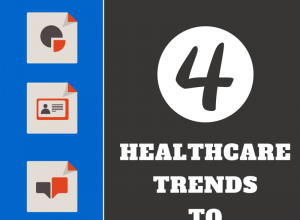

As noted in a recent article by Hospital & Health Network’s Senior Editor, Haydn Bush, “When a patient with a sore throat, earache or other minor ailment heads to the emergency department for a cure, there are a raft of consequences every hospital is familiar with: longer waits for patients with more serious conditions, higher costs for the patient and the hospital, and the challenge of treating a patient in a less-than-ideal care setting.” With the onset of National Patient Safety Awareness Week, it is an ideal time to review innovative strategies for implementing Be Aware for Safe Care (the 2012 NPSF theme), proper selection of care setting, reduction of wait time and expense and, ultimately, a more positive patient experience.
Since hospitals are required by the Emergency Medical Treatment and Active Labor Act (EMTALA) to take care of all patients that arrive in their ED, it is counter-intuitive to think that their best course of action might be to refer patients elsewhere. It is in this vein that leaders at Presbyterian Healthcare Services of New Mexico have been piloting a program to screen patients for more serious problems prior to scheduling a primary care appointment for them. Having met with the Centers for Medicaid & Medicare, local advocacy groups and ED physicians, this group’s initiative has led to decreased ED utilization and return visits from patients who had been navigated to primary care settings previously.
Additional tactics for preventing unnecessary ED visits include staffing and procedural changes within the ED department itself. Nurse Practitioner and Physician Assistants, along with a triage coordinator, have been successful at handling fast track patients with lower acuity. Care coordination teams are also popping up at various facilities in order to ensure that patients presenting with chronic repeat problems receive care from a variety of disciplines – psychosocial, nursing, physical/occupational therapy, dietary and others. Follow-up telephonic visits are conducted in efforts to confirm that patients are adhering to their care plan. If one were to add a relationship management program that encompassed interactive voice response and mobile alerts, it would be intriguing to measure the enhanced outcomes.
According to Neighborhood Health Plans’ Multi-Dimensional Approach to Reducing Preventable Emergency Room Use, there are a number of additional steps that can be implemented post-visit to prevent future ones. First, NHP distributes patient education materials in the form of the Healthwise Handbook to all members who have visited the ED for ambulatory-sensitive conditions in the past quarter. In addition, members have access to the handbook online, which includes an interactive symptom checker. By clicking on a body part and answering a series of questions generated by an evidence-based tool, patients can receive care recommendations such as seek urgent care, call a primary care physician or go to the emergency room.
NHP also sends quarterly reports to all physician groups in its network to indicate: (1) which of their patients have used emergency rooms; (2) which patients have used EDs frequently (i.e., more than five times in the past year); (3) the diagnoses of patients using emergency rooms and whether they used EDs for ambulatory-sensitive conditions;(4) times of day during which patients have used emergency rooms; and (5) health outcomes following ED visits. NHP sends reports to individual physicians and posts them on its secure Web portal so that physicians can sort and analyze the data. Such impactful changes are to be lauded; however, just imagine the change that a multidisciplinary payer – provider team working in tandem with the chronic needs population could achieve.
While these examples are nothing less than noteworthy, the most potentially innovative change could be found in Intermountain Healthcare’s recent telehealth launch, which allows individuals to access primary care physicians or specialists from private computers at the hospital via a video chat feature located on the IHC website. Individuals presenting at the ED, only to learn that their symptoms are more appropriate for primary care, now have the option to speak with a physician in a safe environment for a reasonable fee in an acceptable amount of time. Sounds like a win-win to me.
Principle Healthcare Associates is an expert resource and dedicated advocate for Nurse Practitioner, Physician Assistant, Physician and Healthcare Executive job seekers. With many years of recruiting experience, we deliver strategies to help clients identify diamonds in the rough and candidates that stand head and shoulders above the competition.







